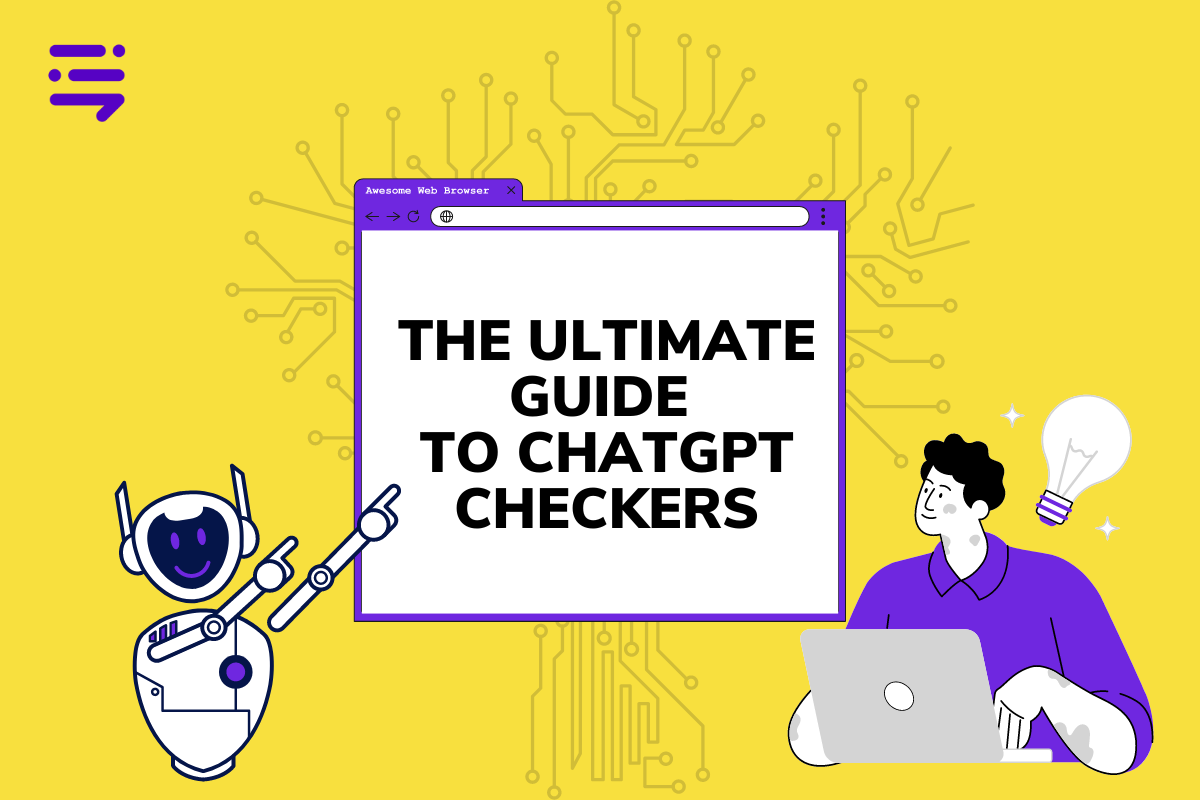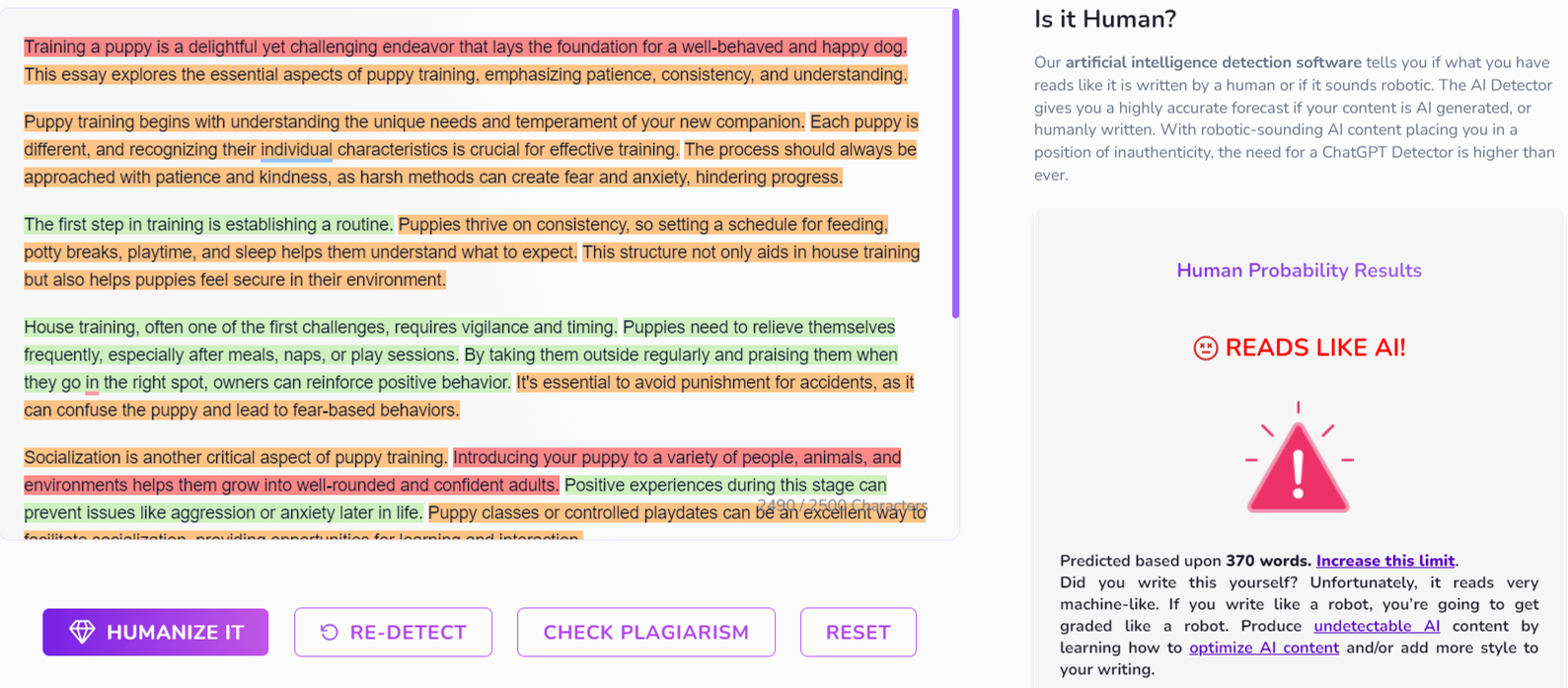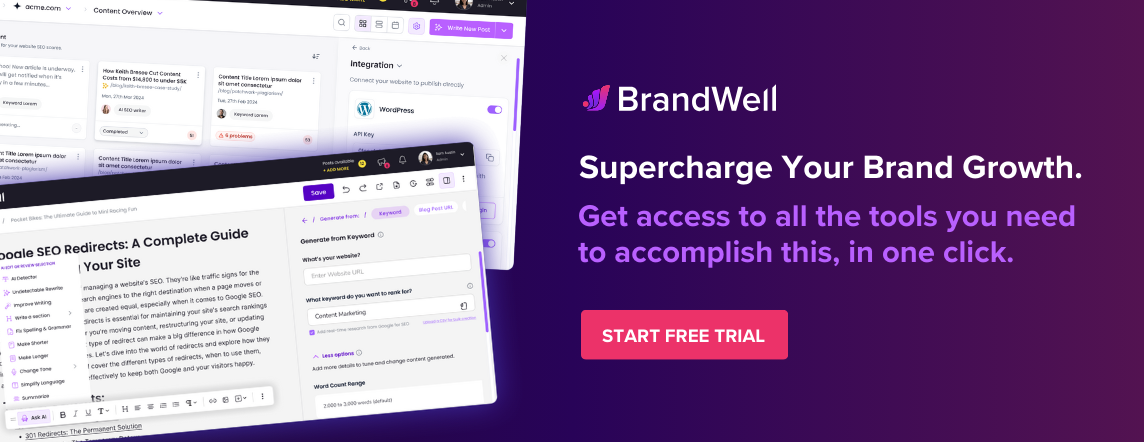Discover top guides, trends, tips and expertise from AIO Writers
The Ultimate Guide to Using a Chat GPT Checker
Jeff Joyce
Monday, 12th Jun 2023
So you’ve discovered this magical thing called ChatGPT. Within minutes it can whip up short content, or answer any question, with a simple prompt.
89% of AI adopters are already using ChatGPT for all sorts of tasks, making it the most popular AI tool today.
But what about quality? Or plagiarism?
And what does Google think of AI-generated content?
In this blog post, we’ll look at how Chat GPT checkers work and why they are widely used as tools to help identify AI-written text in today’s content landscape.
Table of Contents:
- What is ChatGPT?
- How Does AI Detection for ChatGPT Work?
- Who Needs a Chat GPT Checker?
- How to Tell If an AI Wrote the Text You’re Reading
- How to Spot Misinformation Within ChatGPT
- Can Universities Detect ChatGPT?
- How to Check for ChatGPT Writing
- Conclusion
What is ChatGPT?
ChatGPT, or Generative Pre-trained Transformer, is a cutting-edge language model that uses machine learning to generate human-like text.
It’s an AI-powered tool developed by OpenAI that can generate content, translate languages, and even assist with coding.
ChatGPT understands context and produces coherent responses based on the input provided.

How Does AI Detection for ChatGPT Work?
As the use of ChatGPT becomes more widespread, so too does the need for effective AI detection methods.
The Role of Predictive Algorithms
One of the key ways that AI detection tools work is through predictive algorithms. These algorithms analyze patterns in language usage to determine whether a given piece of text was likely generated by a machine or written by a human.
To do this, these tools examine how likely each word would be predicted next based on its context within a sentence or paragraph. By looking at patterns in how words are used together, these algorithms can identify certain phrases or structures that are common among machine-generated text but less common among human-written text.
Distinguishing Between Human-Written Text and Machine-Generated Text
In general, several key differences exist that can help distinguish between AI and human-generated text:
- Creativity: While machines may be able to produce coherent sentences and paragraphs based on existing patterns they have learned from training data sets, they lack the creativity and spontaneity inherent in human writing. As such, texts generated by machines tend to be less imaginative than those produced by humans.
- Vocabulary: Machines often rely on pre-programmed vocabulary when generating new texts. This means that their output may contain fewer unusual words or turns of phrases than you might find in human writing.
- Tone: The tone of machine-generated texts tends to be relatively consistent throughout – after all, computers don’t have feelings! In contrast, humans will typically vary their tone depending on the context and audience for a given piece of writing.
By examining these factors, AI detection tools can help determine whether a given text was likely generated by ChatGPT or written by a human. As such, they they can provide signals that help review whether content appears more human-like or AI-generated, supporting efforts toward originality and authenticity — two key factors in successful content marketing and SEO strategies.
Although ChatGPT has become sophisticated, it can still be flagged by many AI detection systems. However, results vary depending on the detector and the text:

Sure enough, in BrandWell’s AI Content Detector, the text scored as “Reads Like AI.”

Who Needs a Chat GPT Checker?
While ChatGPT has many useful applications, there are also concerns about its potential misuse in creating fake content or spreading misinformation. That’s where a Chat GPT checker comes in — it can help identify whether a piece of text was generated by the language model or written by a human.
Who would need a ChatGPT checker?
Schools and Universities
One group that could benefit from using a Chat GPT checker is schools and universities. With more students turning to online resources for research papers and essays, teachers may want to ensure that their students are not simply copying and pasting information from ChatGPT to write their assignments.
By using an AI detector, educators can verify the authenticity of student work and promote academic integrity.
Journalists
Another group that might find value in detecting ChatGPT-generated content is journalists. In today’s fast-paced news cycle, reporters often rely on digital tools to quickly produce articles under tight deadlines. However, this speed can come at the cost of accuracy if they use automated writing programs without verifying sources or fact-checking information properly.
Publishers
Publishers who create online content may also be interested in identifying any pieces created through automation so they do not put out misleading articles unintentionally which will affect their reputation and readership. An AI detector will help them maintain credibility with their audience while avoiding penalties from search engines for publishing low-quality content.
Digital Marketing Agencies
Digital marketing agencies should use a Chat GPT checker when producing SEO-friendly blog posts for clients since their primary focus is to drive traffic through online content. If they use ChatGPT or other AI chatbots to create these posts, the resulting text may not be as engaging or informative as human-written content which could affect their clients’ brand image and engagement rates.
Writers
Last but not least, writers themselves might want to use a Chat GPT checker when editing their work. While some authors may enjoy experimenting with different writing tools like ChatGPT for inspiration or brainstorming purposes, they must distinguish between machine-generated and original content before submitting anything for publication.
A Chat GPT checker has many potential applications across various industries where authentic human communication is necessary. Whether you’re an educator looking to promote academic integrity among students or a digital marketer striving to produce high-quality content for your clients, AI detectors can help ensure that your written material meets ethical standards while maintaining credibility with both your readership and search engines.
How to Tell If an AI Wrote the Text You’re Reading
While powerful chatbots like ChatGPT have made tasks such as writing essays or composing songs easier and faster, they also raise concerns about authenticity.
Here are a few signs that the text you’re reading was written by a bot.
Look for Repetition
If several people ask ChatGPT the same question, it will generate nearly identical answers for each of them. This means that if you come across a piece of content with similar phrasing or examples used multiple times throughout, it may be generated by AI rather than written by a human.
Consider Timeliness
AIs are trained on data from specific periods which means they may not always provide up-to-date information. For example, if there is breaking news or recent events happening worldwide, ChatGPT won’t be able to generate factual and accurate details related to those events because it was only trained on information up to 2021.
Analyze Language Use
AIs typically follow certain patterns when generating language use and sentence structures. They often rely on pre-existing templates or models while creating content which can lead to repetitive phrases and predictable responses within their texts. If a piece of content seems too structured and formulaic without any variation in tone or style, then it could very well be produced by an AI writer.
While AIs have proven useful in automating various processes and making our lives more convenient, we must remain vigilant when consuming information online. Paying attention to repetition patterns and analyzing language use will help us determine if the text is AI-written.
How to Spot Misinformation Within ChatGPT
A more pressing concern about ChatGPT and other chatbots is their tendency to spread misinformation that can deceive people who rely on their responses.
How do you spot fake news within ChatGPT?
Check the Source
The first step to determine whether a piece of news is real is to check its source. Is it from a reputable website? Does the author have credentials in journalism or expertise on the topic being discussed? If not, then chances are that it may be fake.
Cross-Reference with Other Sources
Another way to verify if a piece of news is legitimate is by cross-referencing with other sources. Are there any other credible websites reporting on the same story? If so, then this increases its legitimacy.
Read Beyond the Headline
Often, fake news articles will have sensational headlines but lack substance beyond them. Make sure you read beyond just the headline and check if facts back up what’s being reported.
Beware of Confirmation Bias
We all have biases based on our beliefs and experiences which can influence how we perceive information presented to us. Be aware of your own biases and try to approach the news with an open mind.
Use Fact-Checking Websites
If you’re still unsure about the legitimacy of a piece of news, there are fact-checking websites that can help verify its accuracy. Some popular ones include Snopes, PolitiFact, and FactCheck.org.
By following these tips, you’ll be able to distinguish between real and fake news on Chat GPT or any other AI tool.
ChatGPT can and will write false and misleading information if prompted. Screenshot from The New York Times
Can Universities Detect ChatGPT?
89% of students admit to using ChatGPT to do their homework. And while it is difficult for educators to flag AI-generated text without software, there are still some factors that could raise suspicion and potentially get students in trouble.
Potential Suspicion
If a professor notices that your homework or essay contains techniques or solutions that were not covered in class, they may become suspicious and investigate further. This is especially true if it appears more sophisticated than expected from a student at your level. In this case, it’s important to be able to explain how you arrived at your solution and demonstrate an understanding of the concepts involved.
Similarity with Other Students’ Work
Another potential issue arises when multiple students use ChatGPT and all of the answers look very similar. That will definitely raise red flags for your professor! Even if you didn’t directly copy someone else’s work, submitting nearly identical solutions can still result in accusations of academic dishonesty.
To avoid these issues altogether, it’s best practice to only use AI chatbots as a supplement rather than a replacement for learning course material. Use them sparingly and always make sure you understand how the tool arrived at its solution before incorporating any generated text into your own work.
How to Check for ChatGPT Writing
If you’re working in content marketing or SEO, you know how important it is to produce high-quality and original content. With the rise of AI chatbots like ChatGPT, it can be challenging to determine whether a piece of writing was generated by a machine or written by a human.
Luckily, there are several online tools available that can help check for AI-generated writing. While none of these tools provide mathematically definite confirmation that the text was written by an AI model, they work on predictions based on patterns and language processing models.
Here are our top 5 Chat GPT checkers:
1. BrandWell
The first tool we recommend is BrandWell’s AI Detector. To use this tool, just paste the text you want to analyze into the checker and click the “Check for AI Content” button.
In the righthand “Results” column, you’ll see each line highlighted in red, orange, or yellow based on how robotic the text sounds.
- Yellow means it’s unclear if the text is AI-generated.
- Orange means it’s possibly AI-generated.
- Red means it’s highly likely to be AI-generated.
You will also get a human score, broken down into predictability, probability, and pattern.

To make results more consistent, test multiple samples together so the detector has more text patterns to analyze.
2. Plagiarism Checker X
Plagiarism Checker X is specially designed for students, teachers, and professionals. This online tool allows you to check for duplicate content in seconds. Its advanced algorithm compares text against databases of known sources, which may include machine-generated material. This means that even if someone else has used an AI chatbot or GPT model to generate their article, you’ll still be able to detect any similarities between their work and yours using this tool.
Plagiarism Checker X supports multiple file formats including .docx, .pdf, and .txt.
3. Copyscape Premium
Copyscape Premium offers advanced features such as batch search (for checking large volumes of content), case tracking (to keep track of all cases related to your website’s content), and integration with other tools like WordPress plugins.
Note that BrandWell also has a premium plagiarism checker so it’s an AI detector, plagiarism scanner, and AI content marketing platform.
Here’s where it’s located in the RankWell dashboard while you’re creating content:

4. DupliChecker
DupliChecker allows users to check up to 1,000 words at once for free without any registration required. For longer texts or more frequent checks than what their free version allows, DupliChecker also offers paid plans starting at $10 per month.
5. PaperRater
PaperRater is a free online tool that checks for plagiarism, grammar errors, and spelling mistakes. It automatically scans documents and flags any content that is duplicated from other sources across the web.
PaperRater also provides sources for duplicate content so that you can edit the text or cite the source as required.
By using these online tools, you can easily determine whether a piece of writing was generated by an AI model. While these tools aren’t perfect, they provide valuable insights that can help content marketers and SEO professionals produce high-quality and original content.
Conclusion
Chat GPT checkers are not foolproof and have their limitations when it comes to detecting AI-written text. These tools are always imperfect, which limits their reliability in many applications.
This is because it’s impossible to ever have a true AI detector since AI writing tools can generate “undetectable” texts or create text with the specific intent of evading these sorts of detectors.
Furthermore, the fact that the AI tools available to us are always improving means there can be some sense of an ‘arms race’ between ChatGPT text detectors and detector-evaders — but there will never be a situation in which detectors can be fully trusted.
If you’re thinking about using detection tools on student essays or any other application where accuracy is important, then you should keep in mind that these types of programs may give false positives up to 10% percent of the time.
While detection software might not provide perfect results every time, they still play an important role in identifying potential instances where machine learning algorithms were used to create content rather than relying on human effort.

UNLOCK YOUR POTENTIAL
Long Headline that highlights Value Proposition of Lead Magnet
Grab a front row seat to our video masterclasses, interviews, case studies, tutorials, and guides.




